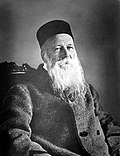International Red Cross and Red Crescent Movement
The International Red Cross and Red Crescent Movement is a global humanitarian network of organizations that strives to alleviate human suffering, uphold human dignity, and foster peace in the world. The movement comprises approximately 97 million volunteers, members, and staff worldwide, making it one of the largest humanitarian organizations globally.
History[edit]
The International Red Cross and Red Crescent Movement was founded in 1863 by Henry Dunant, a Swiss businessman moved by the suffering of wounded soldiers during the Battle of Solferino. His book, A Memory of Solferino, inspired the formation of the International Committee of the Red Cross (ICRC) and the adoption of the Geneva Conventions.
Structure[edit]
The Movement consists of three main components:
- The International Committee of the Red Cross (ICRC): An independent, neutral organization ensuring humanitarian protection and assistance for victims of armed conflict and other situations of violence.
- The International Federation of Red Cross and Red Crescent Societies (IFRC): Coordinates international disaster response and support to the National Societies.
- National Red Cross and Red Crescent Societies: These societies operate within specific countries, following the laws of their respective countries.
Work and Mission[edit]
The Movement provides a range of services, including disaster response, health and social programs, and promoting humanitarian laws. It operates based on seven fundamental principles: Humanity, Impartiality, Neutrality, Independence, Voluntary Service, Unity, and Universality.
See Also[edit]
|
|
|
-
International Red Cross and Red Crescent Movement
-
International Red Cross and Red Crescent Movement
-
International Red Cross and Red Crescent Movement
-
International Red Cross and Red Crescent Movement
-
International Red Cross and Red Crescent Movement
-
International Red Cross and Red Crescent Movement
-
International Red Cross and Red Crescent Movement
-
International Red Cross and Red Crescent Movement
-
International Red Cross and Red Crescent Movement
-
International Red Cross and Red Crescent Movement
-
International Red Cross and Red Crescent Movement
-
International Red Cross and Red Crescent Movement
Ad. Transform your life with W8MD's Budget GLP-1 injections from $75


W8MD offers a medical weight loss program to lose weight in Philadelphia. Our physician-supervised medical weight loss provides:
- Weight loss injections in NYC (generic and brand names):
- Zepbound / Mounjaro, Wegovy / Ozempic, Saxenda
- Most insurances accepted or discounted self-pay rates. We will obtain insurance prior authorizations if needed.
- Generic GLP1 weight loss injections from $75 for the starting dose.
- Also offer prescription weight loss medications including Phentermine, Qsymia, Diethylpropion, Contrave etc.
NYC weight loss doctor appointmentsNYC weight loss doctor appointments
Start your NYC weight loss journey today at our NYC medical weight loss and Philadelphia medical weight loss clinics.
- Call 718-946-5500 to lose weight in NYC or for medical weight loss in Philadelphia 215-676-2334.
- Tags:NYC medical weight loss, Philadelphia lose weight Zepbound NYC, Budget GLP1 weight loss injections, Wegovy Philadelphia, Wegovy NYC, Philadelphia medical weight loss, Brookly weight loss and Wegovy NYC
|
WikiMD's Wellness Encyclopedia |
| Let Food Be Thy Medicine Medicine Thy Food - Hippocrates |
Medical Disclaimer: WikiMD is not a substitute for professional medical advice. The information on WikiMD is provided as an information resource only, may be incorrect, outdated or misleading, and is not to be used or relied on for any diagnostic or treatment purposes. Please consult your health care provider before making any healthcare decisions or for guidance about a specific medical condition. WikiMD expressly disclaims responsibility, and shall have no liability, for any damages, loss, injury, or liability whatsoever suffered as a result of your reliance on the information contained in this site. By visiting this site you agree to the foregoing terms and conditions, which may from time to time be changed or supplemented by WikiMD. If you do not agree to the foregoing terms and conditions, you should not enter or use this site. See full disclaimer.
Credits:Most images are courtesy of Wikimedia commons, and templates, categories Wikipedia, licensed under CC BY SA or similar.
Translate this page: - East Asian
中文,
日本,
한국어,
South Asian
हिन्दी,
தமிழ்,
తెలుగు,
Urdu,
ಕನ್ನಡ,
Southeast Asian
Indonesian,
Vietnamese,
Thai,
မြန်မာဘာသာ,
বাংলা
European
español,
Deutsch,
français,
Greek,
português do Brasil,
polski,
română,
русский,
Nederlands,
norsk,
svenska,
suomi,
Italian
Middle Eastern & African
عربى,
Turkish,
Persian,
Hebrew,
Afrikaans,
isiZulu,
Kiswahili,
Other
Bulgarian,
Hungarian,
Czech,
Swedish,
മലയാളം,
मराठी,
ਪੰਜਾਬੀ,
ગુજરાતી,
Portuguese,
Ukrainian














